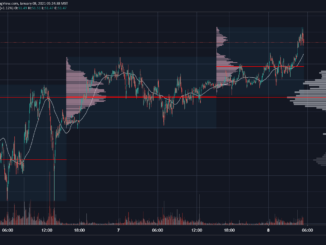
LONDON : Oil benchmarks were on track for a seven-week decline on Friday, their first in half a decade, on worries about a supply surplus and weak Chinese demand, though prices rebounded after Saudi Arabia and Russia lobbied OPEC+ members to join output cuts.
Source: Reuters
Brent crude futures were up US$1.46, or 2per cent, at US$75.51 a barrel at 1431 GMT, while U.S. West Texas Intermediate crude futures were up US$1.33, or 1.9per cent, to US$70.67 a barrel. Brent had earlier risen by US$2.
Both benchmarks slid to their lowest since late June in the previous session, a sign that many traders believe the market is oversupplied. Brent and WTI are also in contango, a market structure in which front-month prices trade at a discount to prices further out.
OPEC+’s “weakening position in providing support coupled with record high US production and sluggish Chinese crude oil import figures can only mean one thing: there is an abundance of oil available, which is neatly reflected in the contangoed structure of the two pivotal crude oil benchmarks,” said Tamas Varga of oil broker PVM in a note.
Friday’s gains, meanwhile, are a “correction and nothing else,” Varga said.
Saudi Arabia and Russia, the world’s two biggest oil exporters, on Thursday called for all OPEC+ members to join an agreement on output cuts for the good of the global economy, only days after a fractious meeting of the producers’ club.
The Organization of the Petroleum Exporting Countries and allies, known as OPEC+, agreed to a combined 2.2 million barrels per day (bpd) in output cuts for the first quarter of next year.
“Despite OPEC+ members’ pledges, we see total production from OPEC+ countries dropping by only 350,000 bpd from December 2023 into January 2024,” said Viktor Katona, lead crude analyst at Kpler.
Some members of OPEC+ may not adhere to their commitments due to muddied quota baselines and dependence on hydrocarbon revenues, Katona said.
Brent and WTI crude futures are on track to fall 4.4per cent and 4.7per cent for the week, respectively, their biggest losses in five weeks.
Fuelling the market’s downturn, Chinese customs data showed its crude oil imports in November fell 9per cent from a year earlier as high inventory levels, weak economic indicators and slowing orders from independent refiners weakened demand.
In the United States, output remained near record highs of more than 13 million bpd, U.S. Energy Information Administration data showed on Wednesday. [EIA/S]
Stronger-than-expected U.S. job growth and a drop in the unemployment rate signalled resilience in the labor market, U.S. Labor Department data showed on Friday. That has dampened hopes that the Federal Reserve would cut interest rates by early next year, and could weigh on markets.
In Nigeria, the Dangote oil refinery is set to receive its first cargo of 1 million barrels of crude oil later on Friday, the start of operations that, when fully running at 650,000 barrels a day, would turn the OPEC member into a net exporter of fuels after having been almost totally reliant on imports.
(Reporting by Paul Carsten in London and Stephanie Kelly and Muyu Xu; Editing by Tom Hogue and Mark Potter)



